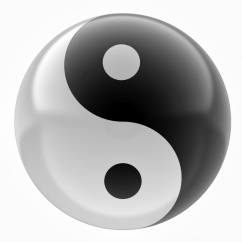 The second pillar of life is Wholeness, Completeness, Totality. (Look at the yin yang picture). “Whole” is a word very close to the words “holy” and “healing”, which is not by chance.
The second pillar of life is Wholeness, Completeness, Totality. (Look at the yin yang picture). “Whole” is a word very close to the words “holy” and “healing”, which is not by chance.
The psyche is the totality of the human mind – both conscious and unconscious. The conscious is the “I”, the ego, the persona, what we project to the world. The “self” is the unconscious, the things we know intuitively, the values, the power of life sitting at the very core.
We should keep the “I” connected to the “self” at all times and the “I“ should rely on the “self” that everything would be fine.
When the Little Prince met the fox, she told him: “And now here is my secret, a very simple secret: It is only with the heart that one can see rightly; what is essential is invisible to the eye.”
Truth can be understood only intuitively. We can search for it and analyze it, but in the end we know the truth, the right decisions intuitively.
Mizuta Masahide, a 17th century Japanese poet and samurai wrote:
Since my house burned down
I now own a better view
of the rising moon
What is he talking about? Is it about taking down all the walls that the ego has built around itself, forced by societal norms and what “face” we try to have for the outside world? Is it that when these walls fall down, we are reunited with the “self” and can be that person, which we really are, and be happy with that union and completeness?
Often a change is needed to achieve that completeness, a breaking down of the walls. One has to be ready to lose everything in order to win. And there are preconditions that need to be fulfilled before that happens – three steps to climb:
The first one is to see, to have an insight. When you see, when you have an insight about the right direction, then half the journey is done.
The second step is to will, to want to take that step. Once you are there, at the second step, you obey that impetus.
And the third step is to dare, to have the courage to do that change in your life.
Soren Kierkegaard says that to dare is to lose one’s footing momentarily. Not to dare is to lose oneself.
In India they have a story that a person goes through three transformations in life – the camel, the lion and the child. The camel first goes with the caravan and follows every step the other camels make. Then it goes away as a lion and hunts down a dragon, fights, and in the last transformation the person is a re-born child with open senses.
Do not be afraid to be that reborn child and be complete.

